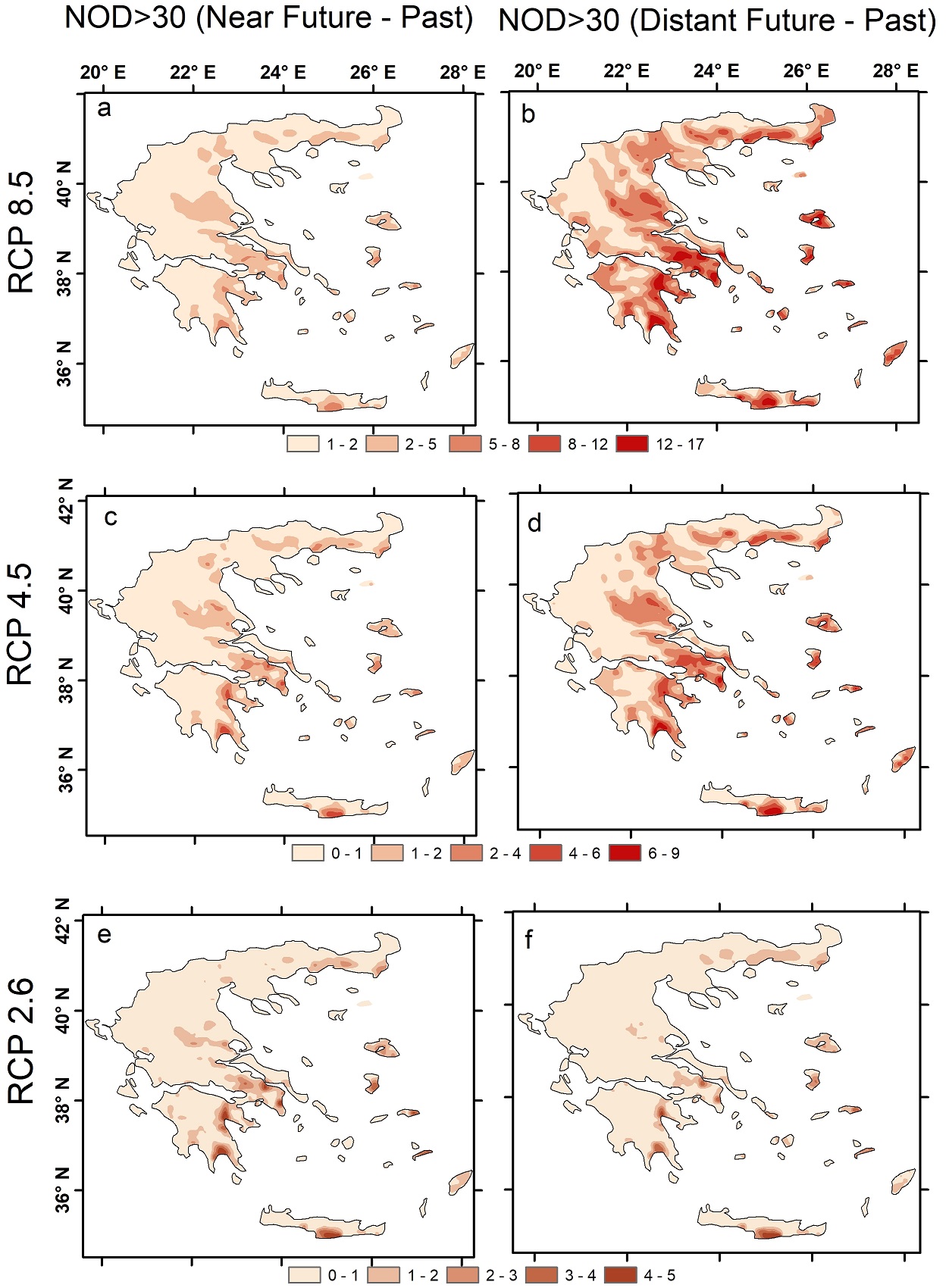Recent studies have shown that temperature and precipitation in the Mediterranean are expected to change, indicating longer and more intense summer droughts that even extend out of season. In connection to this, the frequency of forest fire occurrence and intensity will likely increase.
This PhD project is therefore assessing the changes in future fire danger conditions for the different regions of Greece using the Canadian Fire Weather Index (FWI), utilizing gridded future climate outputs, estimated from six regional climate models from the Coordinated Regional Downscaling Experiment (CORDEX).
The study uses three Representative Concentration Pathways (RCPs) consisting of:
- an optimistic emissions scenario where emissions peak and decline beyond 2020 (RCP2.6);
- a mid-of-the-road scenario (RCP4.5);
- and a pessimistic scenario, in terms of mitigation, where emissions continue to rise throughout the century (RCP8.5).
The FWI projections were assessed for two future time periods, 2021-2050 and 2071-2100, comparing to a reference time period in the recent past 1971-2000. Based on established critical fire risk threshold values for Greece, the future change in days with critical fire risk were calculated for different Greek domains.
The results show that future fire danger is expected to progressively increase in the future, especially in the high-end climate change scenario, with southern and eastern regions of Greece exhibiting increases in the FWI that exceed 20 FWI units, on average.
Furthermore, southern Crete, the Aegean Islands, the Attica region, as well as parts of eastern and southern Peloponnese are predicted to experience a larger increase in the fire danger, with an additional 12-17 potential fire days in the distant future (2070-2100) when compared to the reference period, under the RCP8.5 scenario.

Figure: Difference in the annual ensemble mean number of days (NOD) with FWI>30 between the future periods (for all future scenarios) and the reference period. The left column corresponds to the difference for the near future period [(2020-2050) – (1970-2000)] and the right column to the difference for the distant future [(2070-2100) – (1970-2000)].
Cover image: Varnavas, Greece, 2009, by Filippos Sdralias








